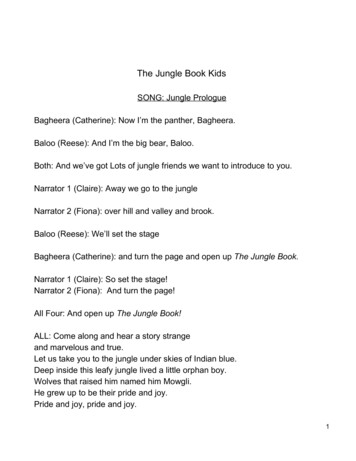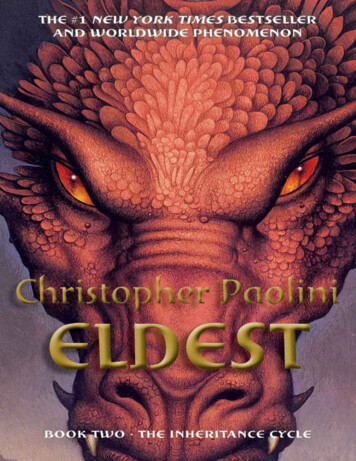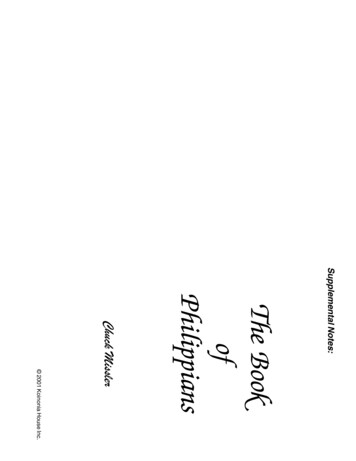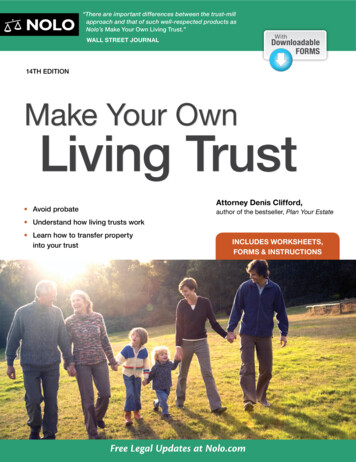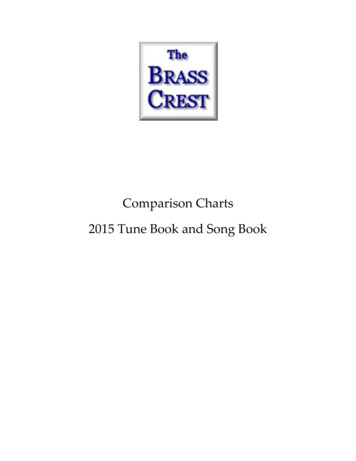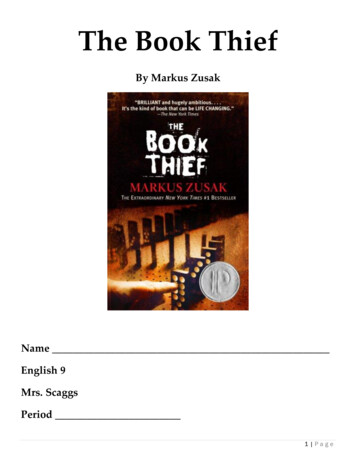
Transcription
The Book ThiefBy Markus ZusakNameEnglish 9Mrs. ScaggsPeriod1 Page
THE BOOK THIEFBy Markus ZusakMarkus Zusak, age 32, currently lives in Sydney, Australia. In his free time, he enjoyssurfing and playing soccer.When Marcus was growing up, he wanted to be a house painter like his father. Hesoon realized he had a talent for knocking things over, painting himself into cornersand figured out painting bored him. When he was a teenager, he read a few novelsthat really brought him into their worlds. He decided he wanted to become a writer.He wrote his first book at age 16, but it took many years before he could get apublisher interested. He was glad he had so many rejections and failures. They madehim realize that what he was writing just wasn’t good enough – so he had to improvewhat he was doing.When it comes to writing, Mr. Zusak has two routines. He said the first one is the nonlazy routine. He begins working at 7am and aims to finish by 11:30am. That usuallysees him though until 12 or 12:30 (with a bit of time-wasting in between). Then hetakes a long break and writes for a few more hours in the afternoon. The lazy routineusually starts at 10am and he usually writes longer in the afternoon. The only timethese routines change is when he is starting a new book or ending one. He thenchooses to work more at night.Mr. Zusak grew up hearing stories about Nazi Germany, about the bombing ofMunich and the Jews being marched through his mother’s small German town. Healways knew it was a story he wanted to tell.He is an award-winning author of five books for young adults: The Underdog, FightingRuben Wolfe, Getting the Girl, I am the Messenger, and The Book Thief.2 Page
The Book Thief Chapters and Page NumbersChapterPage numbersPrologue: a mountain of rubble1-16Part One: the gravedigger's handbook17-80Part Two: the shoulder shrug81-122Part Three: mein kampf123-170Part Four: the standover man171-238Part Five: the whistler239-303Part Six: the dream carrier305-350Part Seven: the complete duden dictionary andthesaurus351-403Part Eight: the word shaker405-455Part Nine: the last human stranger457-493Part Ten: the book thief495-539Epilogue: the last color541-550Due Date3 Page
Themes of The Book Thief Words, Reading, and Propaganda - Throughout the novel, Liesel grows to understand the powerof words, the importance of reading, and the power words can have in changing the minds ofothers (both for the better and for the worse). How is propaganda, in both visual and audiomediums, present in Liesel's everyday life? How has it created a fearful world? Bravery and Cowardice - In Hitler's Germany, is it cowardice NOT to stand up to the Nazis andtheir beliefs? Is this cowardice acceptable? Who was brave in this society? Thievery - As indicated by the title, The Book Thief is a book, in part, about thievery. How doesthis stealing have both literal and symbolic meanings throughout the novel for Liesel and the restof characters? The Use of and Acknowledgement of Colors - In literature as in life, colors can have symbolicmeanings. How did Markus Zusak use colors to express tone and to create bonds betweencharacters in the story? Anger and Abandonment - To be left is to be hurt. Throughout the novel we see characters whowere left by the ones they love or who feel like they were abandoned. What impact does thisabandonment have on the characters personalities and outlooks on life? Tolerance and Intolerance in Nazi Germany - dictionary.com defines tolerance as " a fair,objective, and permissive attitude toward those whose opinions, practices, race, religion,nationality, etc., differ from one's own; freedom from bigotry." How do we see examples of bothtolerance and intolerance in the story? What lessons do we learn from these instances?4 Page
Character ListCharacter NameLiesel MemingerCharacter DescriptionProtagonist; young German girl; brown eyes; book thief; waxyblonde hair; befriended a Jew; determined; foster-child; her brotherdied; poor; “uneducated” but street-smart / clever; skinny; bestfriends with Rudy Steiner; morally aware; curious; tenacious; hardworking; caring; defiant; extrinsically motivatedHans HubermannOptimistic; silver eyes; very caring / loving; father; soothing;talented with accordion; escaped death twice (WWI & ?); patient;brave; impulsive (acts on instincts morals?); acts with integrity;selfless; against the NSDAP (anti-Nazi); protective over Liesel;passive-aggressive?;Rosa HubermannLoud-mouthed; harsh but still cares about Liesel; finds it hard toexpress emotions; verbally and physically aggressive; does possess asoft-side (e.g. when Hans leaves accordion); cardboard-face (neversmiles—stiff; brown); acts strong for Hans; “good woman for acrisis”; simile—Rosa is like a hurricane—strong outside, calminside;NarratorDeath; sympathetic; talks about colors a lot; likes colors; expressesemotions through colors?; uses a lot of metaphors; difficult tounderstand; has no concept of time?; eternal; busy; doesn’t seem tolike his job;5 Page
Character NameRudy SteinerMax VandenburgIlsa HermannCharacter DescriptionAthletic; likes Jesse Owens; sarcastic; smart; kind of obnoxious(because of what he says to Liesel); friends with Liesel; blonde hair;blue eyes; oblivious to the Nazi-thought-process (indoctrination);talented; defiant; stubborn / holds grudges; hates Hitler;Jew (Jewish); German; German-Jew; pretends to fight Hitler in thebasement; likes to fist-fight; likes to day dream; likes to draw; likesto write; used to be afraid of stand-over men; friends with Liesel;really thankful; male, gray, pale, scrawny, hair is like feathers /twigs / sticks / kindling; feels unworthy of help – feels bad for thosewho help him; Liesel helps him feel optimistic; thinks that being aJew is a bad thing (Nazi-indoctrination)—it’s his faultMayor’s wife; fluffy white hair; disconnected from reality; coward(tries to disappear into background by not talking; doesn’t acceptreality); son died; quiet; understanding; giving; punishes herself byleaving the window open—feels guilty; lonely***HOW DID HER SON DIE?Tommy MullerFrau Diller6 Page
Character NameCharacter DescriptionFrau HoltzapfelHans Junior and TrudyHubermannFranz DeutscherErik VandenburgArthur BergViktor ChemmelWalter Kugler7 Page
Identifying Literary TechniquesDeath and Chocolate and Beside the Railway LineDirections: Identify the following literary elements: similes, metaphors,personification, hyperbole, onomatopoeia, alliteration and imagery. Which one of theliterary techniquesa. I can be amiable. Agreeable. Affable.b. Personally I like a chocolate covered sky.c. It helps me relax.d. It felt as if the whole globe was dressed in snow.e. The world was sagging now, under all that snow.f. The guard was as small as a squirrel.g. Death was honest Abe.8 Page
Use this as a guide for reading. As you read each page, answer the questions. Readthe guide and follow the directions.As you read, you will come across beautiful sentences, descriptions and quotes. Usethis area to write quotes from that you find meaningful. Write at least 2 quotes.QUOTE AREAArrival on Himmel Street (Pages 19 – 29)Setting/Characters: Liesel , her brother and mother are travelling on a train in Germany, 1939Read page 19 then answer the questions.1. What color is the sky? What do you think this symbolizes?2. What question do you have after you finish reading page 19?Did you find any quotes to record in the quote section?Read page 20 – 213. How old is Liesel?What year is it?What do you know about Liesel’s education?4. What do you think about the way Death describes Liesel’s brother’s soul?Did you find any quotes to record in the quote section?9 Page
Read pages 22 - 235. Where are they going?6. How does Death let the reader know how cold it is out? What words does hechoose?Read pages 247. What did Liesel steal?Read pages 25 – 268. What does Himmel mean?What does this make you think?Read pages 26 – 299. Do you like Rosa? Why or why not?10. What is the name of the book Liesel took?Why do you think she took it?Did you remember to write some quotes?10 P a g e
Growing Up Saumensch Pages 30 – 33 (Inferring)Before you read you need to know:Profanity – means cursingVehement – means strong, aggressiveRead page 311.“Liesel had a starving smile.” What does this mean?2.Liesel’s father is a Kommunist (Communist). How is this presented in the text? What wordsmake the reader know that to be Kommunist is not acceptable?Read page 323. Why did Liesel’s mother leave her?Read pages 33 – 35The reader learns a lot about Rosa (Liesel’s mother) and Hans, (Liesel’s father). What words doesthe author use to tell us the following?Hans is:We know this becauseon page1.creativeHe played the piano and accordion.332. lucky3. kind4.valuableRosa is :1. hardworkingWe know this because :She did washing and ironing342. a terrible cook3. verbally abusive3. always angry looking11 P a g e
The Woman With the Iron Fist (Pages 36 – 45) (Connecting)Read the following quotes and interpret each one.Choose two (2) quotes and make a connection.Example:“ her mother carried the memory of him .”This quote means that after the boy died his mother always remembered him.Connection – When you really love someone they are always inside you, even afterdeath.Page 37“Not leaving: an act of trust and love Meaning:Connection:Page 37 “No one had ever given her music before.”Meaning:Connection:Page 38 “It didn’t really matter what the book was about. It was what it meant thatwas more important”Meaning:Connection:Page 39 “She often wished she was pale enough to disappear altogether.Meaning:Connection:12 P a g e
Page 41 “ .He dragged her gently from her nightmare.”MeaningConnectionExtra CreditDid you find any other quotes that you liked or could relate to?13 P a g e
The Kiss Pages 46-55Part 1Prior Knowledge1. Jesse Owens (watch video clip)Page 46Listening ActivityListen to the description of the neighbors on Himmel Street. Do they remind you ofyour neighbors? Would you like to live on Himmel Street?You will read the following passage and be prepared to discuss it with a partner.It is helpful if you are able to concentrate on and be able to discuss the following withyour partner.Part 2Read the questions before you read the passage so you are prepared.Group 1 Read pages 47 (top) – 49 (Up to, An Important Note)Questions:1. What did the kids do in their spare time?2. Who was the worst player on the team and why?3. How did Rudy and Liesel get along?4. What kind of soccer player was Liesel?5. What kind of kid was Rudy? What did he look like? Did other kids like him?6. How was Rudy different from other kids?Group 2 Read pages 49 (Start at, An Important Note) – 50 (Up to, The Last Stop)Questions:1. What kind of business did Frau Diller own?2. What kind of women was Frau Diller?3. How did she treat her customers?4. Who was she loyal to?5. What kind of shop did Rudy’s father own?6. How come Liesel did not know that it was Rudy’s father shop when she saw it?14 P a g e
Part 3Share what you read with your partner. Use the questions to help you remember theimportant parts. Re read together if necessary.Part 4ReadThe Last Stop together as a class.Refer toI Never Saw Another Butterflybook to appreciate the artworkcreatedby Holocaust victims.Optional: Instead of doing tonight’s homework you may choose to draw a picture andcreate a scene that illustrates the description Zusak uses to explain what the road ofyellow stars looked like. Do your best work.Part 5Read aloud bottom of page 51 and top of page 52. DiscussSilent reading of page 53 bottom .”Come on,” Rudysaid, to the end.15 P a g e
The Jesse Owens Incident (Page 56 – 61)Read page 561. What struck you as strange about Hitler’s reaction to Jesse Owens?Read pages 57 – 582. What did Rudy do to demonstrate that he saw Jesse Owens as a rolemodel?Read page 59 (bottom) two times.3. What was Mr. Steiner saying to Rudy? Did he like the Jews? What wasconfusing about what he said?4. Make a connection to Night and “She Shall Not Be Moved.” Analyze the wordsMr. Steiner is telling Rudy. Think about how one learns to be intolerant? Is itnatural (within) or is it learned?How do parents and society teach intolerance?Be prepared to discuss these thoughts and ideas tomorrow.16 P a g e
On-Going Quote AssignmentWe have been discussing the beautiful words in The Book Thief and the unique wayMarcus Zusak combines his words to allow the reader to experience reading on adeeper and more meaningful level. As you read, copy sentences that you findtouching, curious, significant or silly. Use three pages in your notebook to keep thesespecial quotes together. You should at least record one (1) or two (2) quotes a day.17 P a g e
The Other Side of Sandpaper (Page 67 – 68)Open your notebook to a blank page and date it (but don’t marry it).Prior Knowledge1. Liesel has trouble reading.2. Liesel has screaming nightmares.Read silently page 67 – 68 and respond in your notebook. Give a reaction, not asummary.Shoulder ShrugTown Walker18 P a g e
Dead Letters (Pages 97-100)Prior Knowledge1.Liesel has been waiting for her mother to write to her.2. Hans and Rosa do not have the heart to tell Liesel her mother is missing and they are not sureshe is alive.3. Hans allows Liesel to continue to write her mother letters although he knows her mother willnever receive the letters.4. Rosa does laundry for wealthy people and it is Liesel’s job to drop off the clean laundry andcollect the money for Rosa.5. Watschen means beating in German6. Animosity means hatredPart 1Read page 97 – and the top of 98 until the break in the page. Write a response to this section in yournotebook.Part 2Read page 98 (the middle of the page) and record your thoughts about Liesel’s birthday in yournotebook.Part 3Read the rest of the chapter (pages 98 – 100). Write your thoughts as you read.Pretending you are 10 year old Liesel, compose a
The Book Thief By Markus Zusak Name _ English 9 Mrs. Scaggs Period _ 2 P a g e THE BOOK THIEF By Markus Zusak Markus Zusak, age 32, currently lives in Sydney, Australia. In his free time, he enjoys surfing and playing soccer. When Marcus was growing up, he wanted to be a house painter like his father. He soon realized he had a talent for knocking things over, painting himself into .
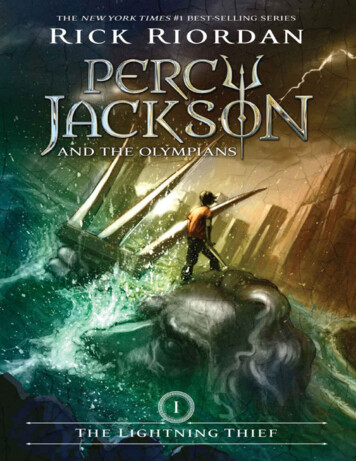
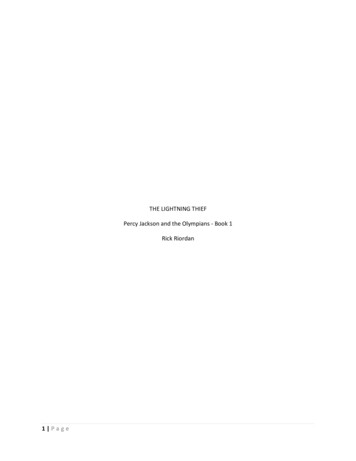
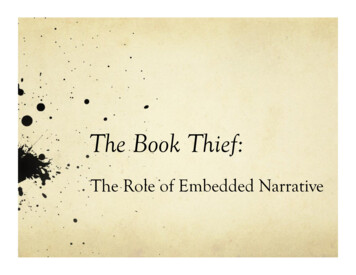
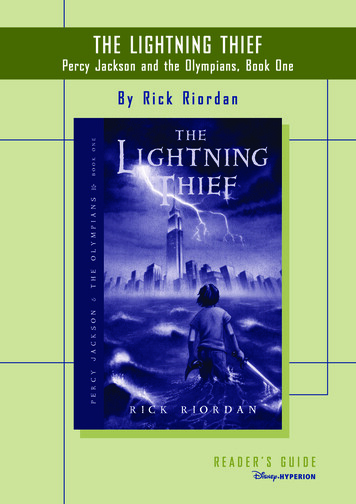
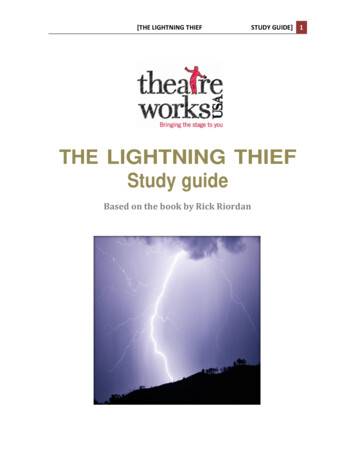
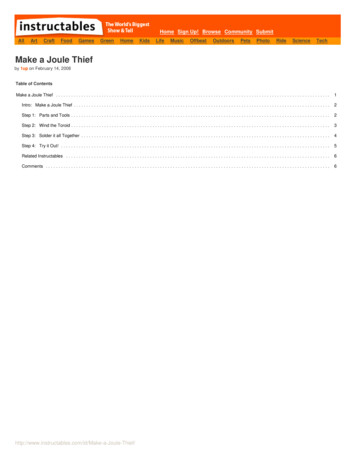
![English Text Book[1] - Weebly](/img/4/comprehension-and-communication-skills-in-english-engl101.jpg)
